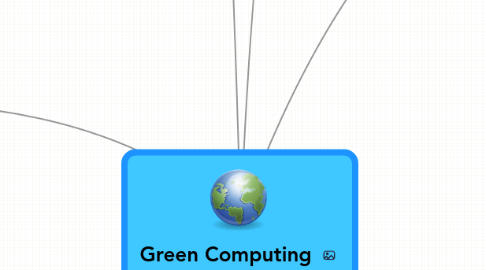
1. Economy
1.1. Job Creation
1.2. Business Opportunities
1.3. Standard of Living
1.4. Spending
1.5. Market Intricacy (Globalization)
2. Business Models
2.1. Business Processes
2.2. Departmental Accountability
2.2.1. Key Performance Indicators
2.2.2. Energy Performance
2.3. Regulation Adherence
2.4. Business Reputation
2.4.1. Brand
2.4.2. Marketing
2.5. Commitment
2.5.1. Top-Down
2.5.2. Budgets
2.5.3. Company Values
2.6. Mergers & Acquisitions
2.7. Collaboration
2.7.1. Client Relationship Management (Partner Relationship)
3. Methodological Review
3.1. Research Data
3.1.1. Secondary Data
3.1.1.1. External
3.1.1.1.1. Authenticity
3.1.1.1.2. Published Material
3.1.1.1.3. Online
3.1.1.1.4. Library
3.1.1.1.5. Social / Professional Networking
3.1.1.2. Internal (Organization)
3.1.1.2.1. Access Limitations
3.1.1.2.2. Non-disclosure Agreements
3.1.1.2.3. Permission / Copyright Issues
3.1.2. Primary Data
3.1.2.1. Qualitative
3.1.2.1.1. Company Interview
3.1.2.1.2. Focus Groups
3.1.2.2. Quantitative
3.1.2.2.1. Limited access to relevant people
3.1.2.2.2. Too time consuming
3.1.2.2.3. Geographical Location Issues
3.1.2.2.4. Money Constrains
3.2. Collaboration
3.2.1. Online Calendar, Groups, Document Sharing
3.2.2. Skype
3.2.3. Email
3.2.4. XML - Reference Sharing
3.2.5. MindMaster - Idea Sharing
3.2.6. Weekly student meetings
3.2.6.1. Record Meeting Minutes
3.2.6.2. Agenda Discussion
3.2.6.3. Milestone Discussion
3.2.6.4. Raising Issues / Urgency
3.2.6.5. Planning & Projecting (Timeline)
3.2.7. Academic Advisor
3.2.7.1. Emails
3.2.7.2. Sharing links to documents, resources, ideas, mindmaps, ...
3.3. Objectives
3.3.1. Understanding Issues
3.3.2. Explore pre-requisites
3.3.3. Prove / Disprove claims and role of Green IT
3.4. Motivation
3.4.1. Work Experience
3.4.2. Personal Interest
3.4.3. Voluntary Work
4. Energy Concerns
4.1. Energy Sourcing
4.1.1. Oceanic
4.1.2. Hydro
4.1.3. Solar
4.1.4. Processed Energy (BTU)
4.1.5. Clean vs. Dirty Energy (Peak Time Energy)
4.1.6. Infrastructure
4.1.6.1. Reliability
4.1.6.2. Smart Grid
4.1.6.3. Scalability
4.1.6.4. Convergence
4.2. Energy Storage
4.2.1. Hydro
4.2.2. Batteries
4.2.3. Water Reservoirs
4.2.4. Air Compression
4.2.5. Carbon-Capture
5. IT Components & Energy Consumption
5.1. IT Hardware
5.1.1. Servers
5.1.2. Storage
5.1.3. Cooling Systems (Fans)
5.1.4. Work Stations & Thin Clients
5.1.5. ChipTechnology
5.1.6. Network Infrastructure
5.2. Mobile Computing
5.2.1. Battery Life
5.2.2. Screen Efficiency
5.2.3. Geo-Computation (Satellites)
5.2.4. Life-Cycle Reduction
5.2.5. Mobile Chip Technology
5.3. Systems & Consolidation Methodologies
5.3.1. Cloud Computing
5.3.2. Network Grids
5.3.3. Remote Access
5.3.4. Virtualization
5.3.5. Internet
5.4. IT Software
5.4.1. Operating Systems
5.4.2. Planning & Design Software
5.4.3. Power Management Software
5.4.3.1. Corporate
5.4.3.2. End Users
5.4.4. Global Simulation Models
5.5. Office & Data Centres
5.5.1. A/C Cooling
5.5.2. Efficiency vs. Carbon Solutions
5.5.3. Buildings (LEED)
5.5.4. External Climate Utilization
6. Product Life-Cycle
6.1. Procurement (IPR)
6.2. Production
6.3. Distribution
6.4. Recycling & Disposal
7. Policies & Best Practices
7.1. Government
7.1.1. GDP
7.1.2. Tax Incentives
7.1.3. Certifications
7.1.4. Energy Pricing (Outside of Scope)
7.1.5. Emissions Trading Scheme (US?)
7.2. Independent Organizations
7.3. Companies & CSR
8. IT Developments & Trends
8.1. New Technology Development
8.1.1. Monitoring Systems
8.2. Accessibility (Out of Scope)
8.2.1. Infrastructure Requirements
8.2.2. Developing Countries
8.3. Awareness
8.3.1. Web 2.0 / Internet
8.3.2. Perception (Consumer vs. Executive)
8.3.3. Behavioural Changes
8.3.4. Labeling & Certifications
9. Sustainability
9.1. Definition
9.2. 3 pillars
9.2.1. Social
9.2.2. Economic
9.2.3. Environmental
9.3. Triggers
9.3.1. Degradation of environment
9.3.1.1. Waste Polution
9.3.2. Globalisation
9.3.3. Climate change
9.3.3.1. Climate
9.3.3.1.1. CO2 Footprint
9.3.3.1.2. Preservation and Prevention
9.3.3.1.3. Green House Gas Emissions
